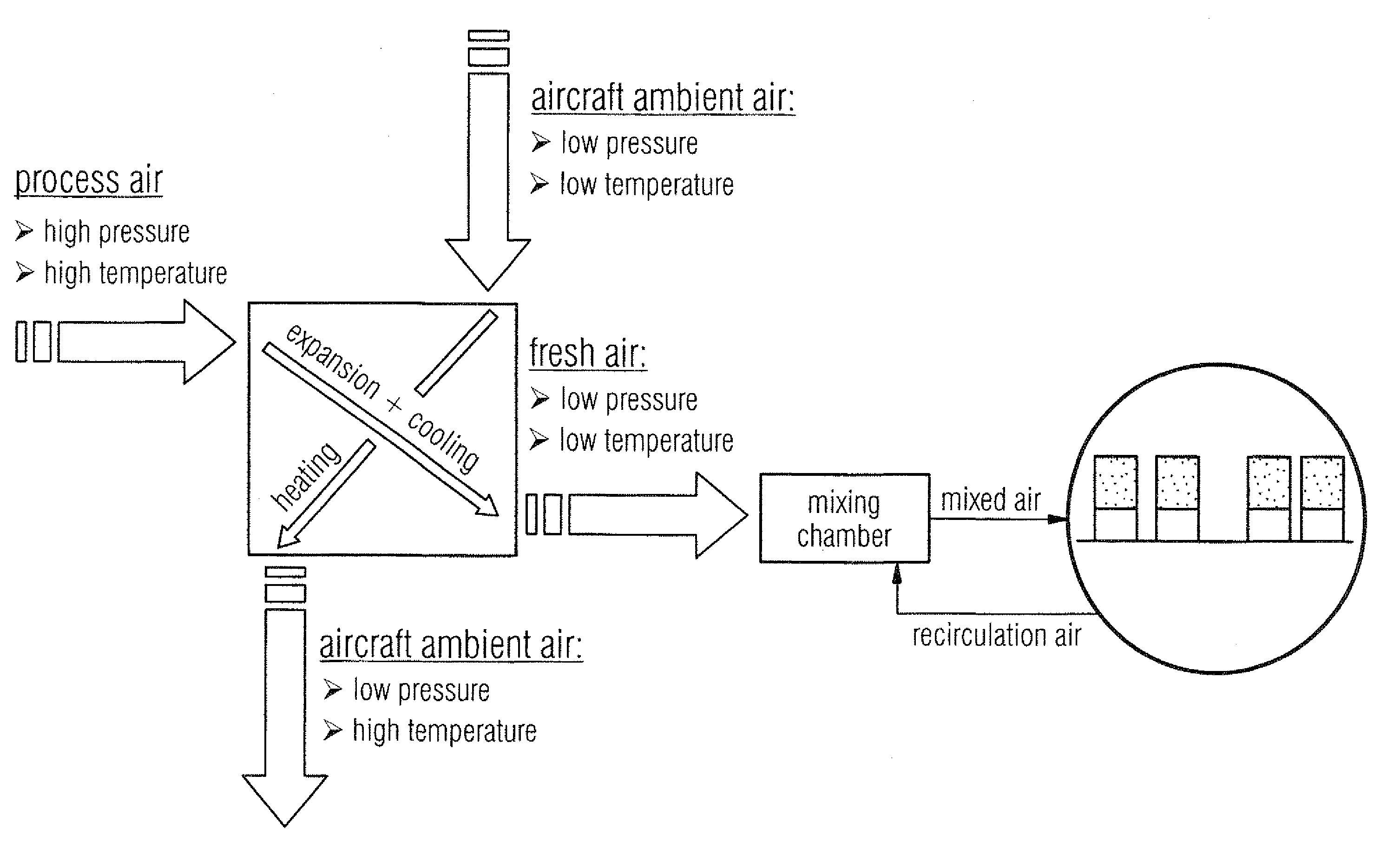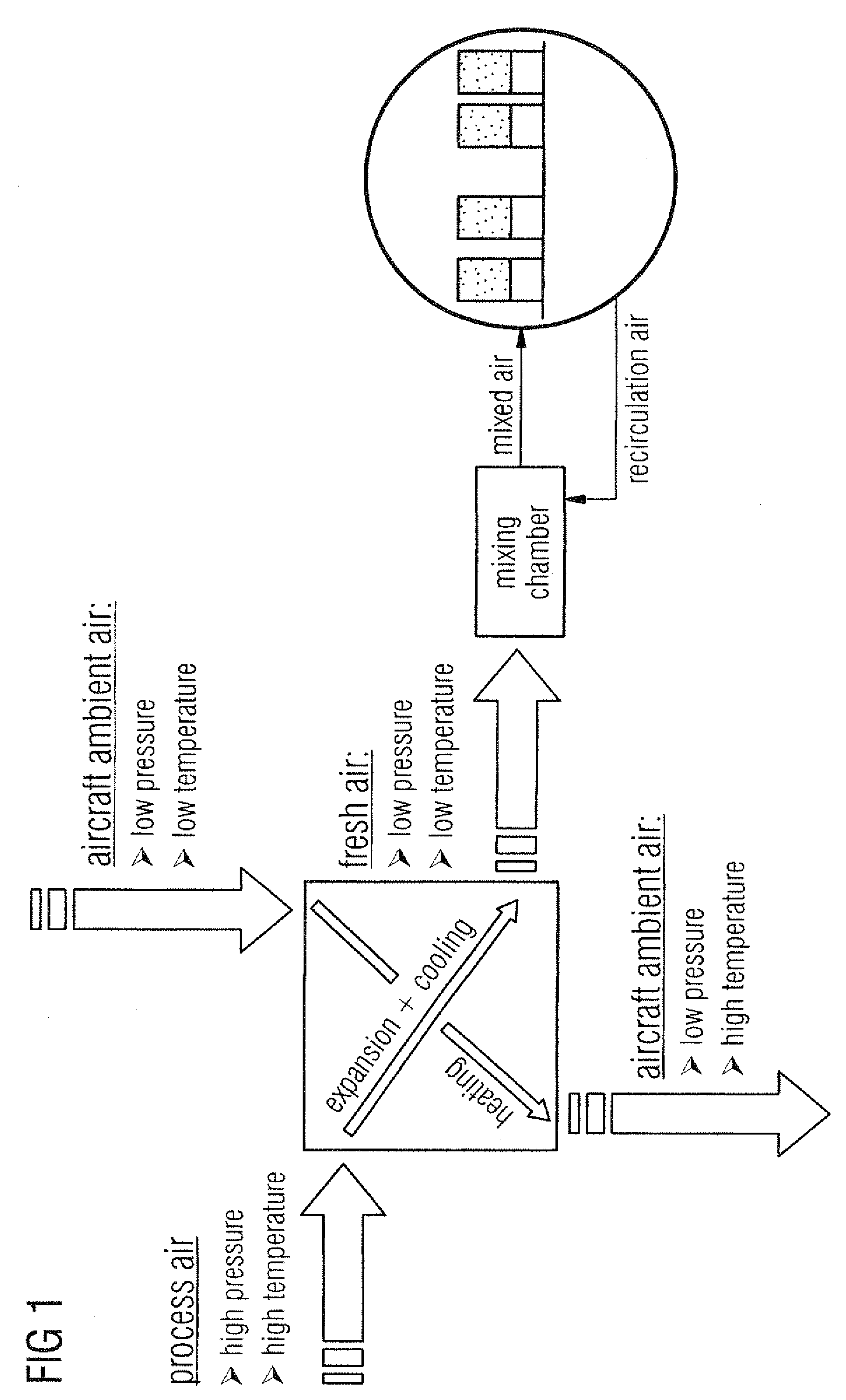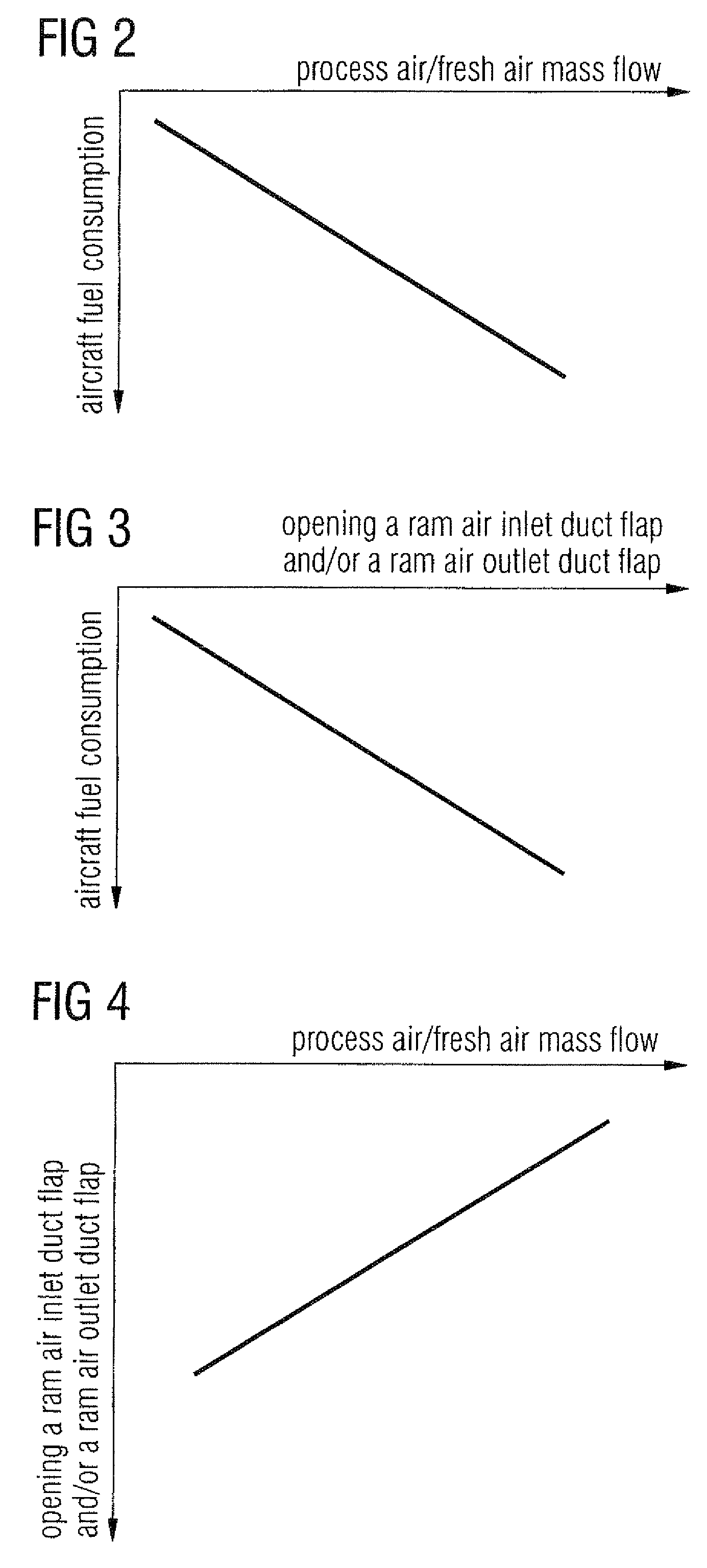Method and system for controlling an aircraft air conditioning system with optimised fuel consumption
a technology of air conditioning system and fuel consumption, which is applied in the direction of domestic cooling apparatus, energy-efficient board measures, lighting and heating apparatus, etc., can solve the problems of increasing the fuel consumption, increasing the process air mass flow, and increasing so as to reduce the fuel consumption of aircraft, reduce excess weight and extra costs of additional equipment, and reduce the effect of excess weigh
- Summary
- Abstract
- Description
- Claims
- Application Information
AI Technical Summary
Benefits of technology
Problems solved by technology
Method used
Image
Examples
Embodiment Construction
[0033]The aircraft air conditioning system 10 which is shown in FIG. 5 comprises an air conditioning unit 12 with a compression and expansion unit 14 as well as a heat exchanger unit 16. The air conditioning unit 12 of the aircraft air conditioning system 10 also comprises a number of different regulating and control valves 18.
[0034]Process air which is bled off the engines of the aircraft or produced by compressors formed separately from the engines is supplied to the air conditioning unit 12 of the aircraft air conditioning system 10 at a high temperature and under high pressure. The process air supply into the air conditioning unit 12 is controlled by means of a process air supply regulating system 20. The process air is treated in the air conditioning unit 12 upon flowing through the heat exchanger unit 16 as well as the compression and expansion unit 14 such that it leaves the air conditioning unit 12 as fresh air which is expanded and cooled down to a desired temperature. The ...
PUM
 Login to View More
Login to View More Abstract
Description
Claims
Application Information
 Login to View More
Login to View More - R&D
- Intellectual Property
- Life Sciences
- Materials
- Tech Scout
- Unparalleled Data Quality
- Higher Quality Content
- 60% Fewer Hallucinations
Browse by: Latest US Patents, China's latest patents, Technical Efficacy Thesaurus, Application Domain, Technology Topic, Popular Technical Reports.
© 2025 PatSnap. All rights reserved.Legal|Privacy policy|Modern Slavery Act Transparency Statement|Sitemap|About US| Contact US: help@patsnap.com



